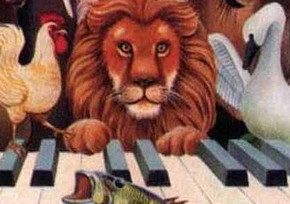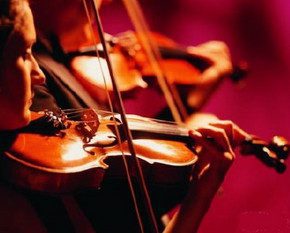
Listening to “Carnival of Animals” with a child
 Caring parents who deeply care about the future of their children are well aware that music perfectly develops children’s intelligence, thinking, memory and attention. However, not everyone manages to take listening to music with a child to a higher level than just background perception. It turns out that listening to music with your child is not only necessary, but also possible. How can this be accomplished?
Caring parents who deeply care about the future of their children are well aware that music perfectly develops children’s intelligence, thinking, memory and attention. However, not everyone manages to take listening to music with a child to a higher level than just background perception. It turns out that listening to music with your child is not only necessary, but also possible. How can this be accomplished?
Psychologists have long known that young children have imaginative thinking. Until a certain age, words for them do not have the same meaning as for adults.

Illustration for the play “The Royal March of the Lion” from “Carnival of the Animals”
For example, if a child hears the word “tree”, until a certain age it means little to him. But if his mother shows him a picture of a tree, or, even better, they go out into the yard, go up to the tree, and he tries to clasp the trunk with his little hands, and then run his palms along the rough trunk, then this word will no longer be an empty shake of air for him .
Therefore, for kids you should select music with clearly expressed images and ideas. It is possible, of course, to listen to works that do not have them, but in this case, the parents will have to invent images. For a child, the closest images are those that he has already encountered somewhere, therefore, the most successful start will undoubtedly be “Carnival of Animals”, written by a famous composer by Camille Saint-Saëns.
Today we will focus on three plays included in this cycle, namely “Royal March of the Lions”, “Aquarium” and “Antelopes”. All these works are diverse, which will help the child understand the difference in characters.
The composition of the instruments in Carnival of the Animals is somewhat unusual: a string quintet, 2 flutes and a clarinet, 2 pianos, a xylophone and even a glass harmonica. And these are also the advantages of this cycle: the child will be able to get acquainted with both string instruments, piano, and wind instruments.
So, before you start listening to works from this cycle, you should prepare in advance:
- Figurines of necessary animals;
- Props that will help both the child and the parents transform into these animals. For example, for a lion, it will be a mane made of a scarf, and for antelopes, it will be horns made of pencils;
- Fantasy! This is the most important and necessary component.

Illustration for the play “Swan” from “Carnival of Animals”
You need to live music together with your child, and for this the active participation of the child is absolutely important. Having reincarnated as a lion, he will grasp the nature of the march, understand where the lions are sneaking and where they are solemnly striding.
It’s the same with “Antelopes”; a child, having jumped around to his heart’s content, will never confuse this music with any other. At its very first chords, graceful antelopes will appear before his eyes.
As for “Aquarium,” when listening to this work, the child will calm down: he will perceive the kingdom of fish as a silent, quiet, but beautiful world.
You can depict actions using toys, draw or even sculpt. Whatever the child likes will do. And gradually he will be able to unmistakably recognize any work from this cycle, and a little later, the instruments that play them.
Listening to music should bring joy to both adults and children. The smile and joy of a child who hears a familiar piece of music is in the hands of his parents. Don’t forget about this!
C. Saint-Saens “Aquarium” – visualization



